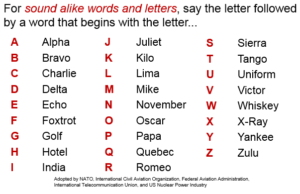New Jersey S.T.R.O.N.G. HRO Safety Behaviors and Tools: R = Reliably Communicate
There are six safety behaviors that align with New Jersey STRONG’s name and mission:
S – Speak Up for Safety
T – Think Critically
R – Reliably Communicate
O – On Task
N – No Harm
G – Got Your Back
The third New Jersey STRONG safety behavior – Reliably Communicate – focuses on point-to-point communications. Good communication leads to good teamwork and good decisions, so it’s important to be rigorous and prudent in how we send and receive information.
What should we do? Ensure that we hear and understand things accurately.
Why should we do this? To prevent wrong assumptions and misunderstandings that could cause us to make wrong decisions.
There are three error prevention tools for the Reliably Communicate safety behavior that we will discuss over the coming months:
- Three-Way Repeat-Backs
- Read-Backs
- Clarifying Questions
Clarifying questions probe for understanding and can be asked by the Sender or by the Receiver.
You don’t always have to ask clarifying questions, but you should most certainly ask them in the following situations:
- When in high-risk situations
- When information is incomplete
- When information is ambiguous or not clear
A good way to convey your need for understanding in the interest of patient safety is by saying, “let me ask a clarifying question.” This allows people to be more receptive to your question. Asking the question directly may sound as if you are challenging the person or their knowledge, when in reality you just want to understand the situation.
You may ask a clarifying question to clear up a word or letter that can be confusing. The phonetic alphabet below has been used since 1957 by the military, commercial aviation, and nuclear power to aid in clear communications.
You can also request clarification regarding numbers, especially for sound-alike numbers. Make sure to say the number and then say the digits to avoid confusion with the sound-alike numbers.
 Studies have shown that the probability of making a wrong assumption is reduced 2½ times when you ask clarifying questions.
Studies have shown that the probability of making a wrong assumption is reduced 2½ times when you ask clarifying questions.
